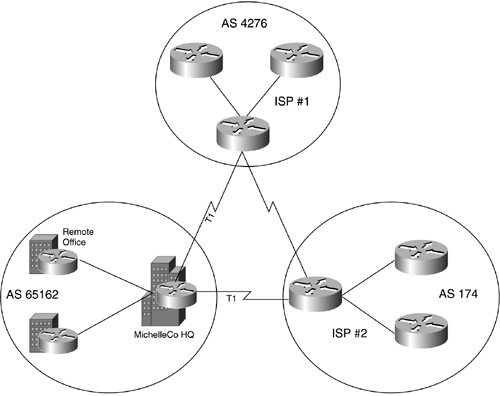Common BGP Implementation
for backup purposes. Figure D-5 illustrates a customer WAN with dual Internet connections a T1 each to ISP#1 and ISP#2. This customer announces private Autonomous System Number (ASN) of 65162 to both ISPs and will receive route updates from ISP #1 (ASN 4276) and ISP #2 (ASN 174).
Figure D-5. Dual (Multi) Homed BGP Implementation

As with OSPF, a BGP-configured router first exchanges the entire routing table. After a peering relationship has been established, only changes are sent. BGP routers send keepalives, ensuring that connections are still active and available. Like OSPF and EIGRP, BGP uses AS numbers. BGP uses a single metric for path selections that may be manually configured to "fine-tune" the network to meet determined design needs.
BGP4 uses Autonomous Systems Numbers (ASNs) to identify to which system a router belongs. These ARNs are allocated by the IANA (Internet Administration Numbering Authority) to the national registries and range from 1 to 64511. ASNs 64512 to 65535 are assigned by ARIN for private use and will be seen only by the upstream service provider; they are not propagated into other ASNs.
EAN: 2147483647
Pages: 269